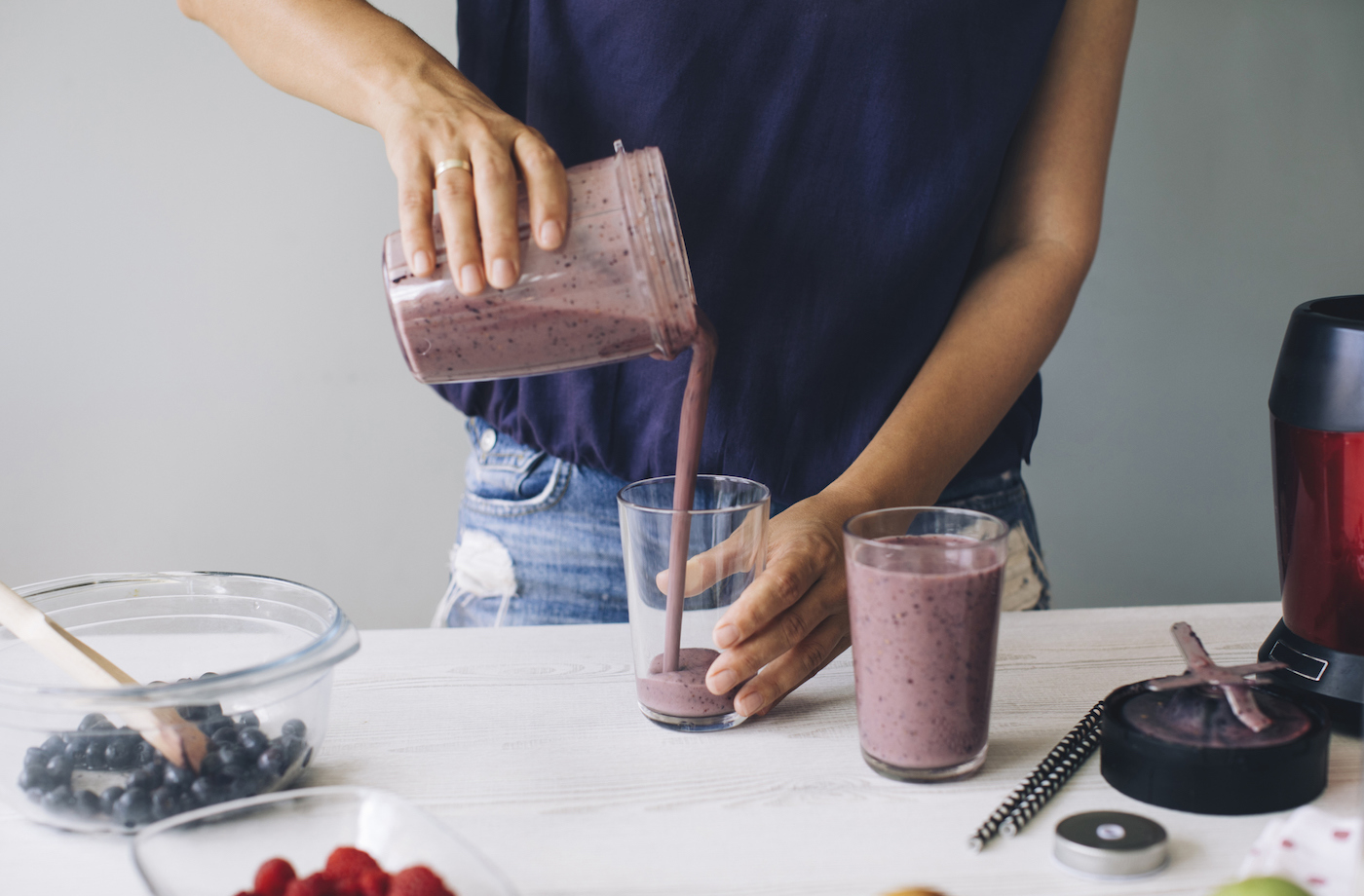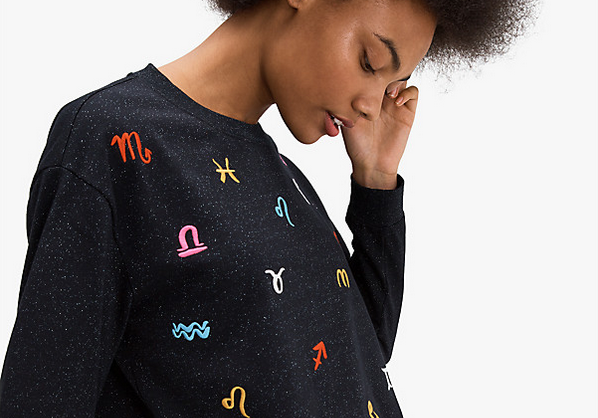
February 11, 2020 at 02:00PM by CWC
Sometimes it seems like we’ve seen anything that could possibly trend in the wellness world have a moment. Jade eggs? Check. Eating all fat? Check. CBD everything? Check. But just when you thought you’ve seen it all…enter the rise of sea moss.
No, it’s not your imagination—sea moss is having a moment. The slimy seaweed has sparked a torrent of colorful #seamosssmoothies and other recipes splashed across our Instagram feeds. According to Pinterest’s 2020 Trends Report, search volume for “sea moss benefits” increased 380% from 2018 to 2019. Even Kim Kardashian-West recently tweeted to her fans in a Q&A that she enjoys the occasional sea moss smoothie.
It appears the algae has really grown on the wellness world (pun very intended). But, uh, what exactly is it? And is it worth the hype?
Sea moss—aka Irish moss—is a species of red algae found on the Atlantic shorelines of North America, Europe and the Caribbean Islands. Historically, the seaweed has been harvested and dried to create carrageenan, a common thickening ingredient akin to a vegan gelatin. Carrageenan has actually been the center of wellness controversy for years due to its potential links to inflammation and other illnesses (although research on the subject is mixed).
ADVERTISEMENT
ADVERTISEMENTKate Spade Autumn/Winter Sale |
Now the seaweed itself—not its extract—is making a splash. “This algae has been used for many years as an alternative medicine in Jamaican and Irish cultures, but is becoming quite popular in the health and wellness industry,” says Lisa Richards, CNC, a nutritionist and author of The Candida Diet. “Consumers of sea moss boast of benefits ranging from immune support to mood and emotional enhancement.”
We have questions—a lot of questions—and are sure you do too. Keep reading to learn everything you need to know before jumping on the bandwagon and making your own seaweed shakes.
Does sea moss have any health benefits?
There have been a handful of studies here and there, but research on the health benefits of sea moss is limited. Nutritionally speaking, there are some perks. Some dietitians are particularly impressed by its potential for promoting gut health.
“Improved digestion is one of the most popular uses for sea moss, as it acts as a prebiotic in the gut,” says Richards. Prebiotics, as a reminder, are ingredients that feed the good bacteria in your gut, which promotes their growth. Plus, the algae is a mucilaginous food, which is just a fancy way of saying it’s sticky and full of fiber (similar to chia seeds, flax seeds, and aloe). This is what allows the colon to function better, “which heals the gut’s lining as well as ridding the gut of harmful bacteria,” Richards says.
It’s also rich in certain major minerals, like magnesium and iron, that promote healthy bodily function. “The amount of iron [in sea moss] is significant,” says Amy Gorin, RDN, the owner of Amy Gorin Nutrition in the New York City area. “One hundred grams contains 8.9 milligrams of iron, which is almost half the daily value, making it an excellent source.” Plus, it’s packed with folate (great for prenatal health) and protein—Gorin says sea moss provides almost two grams of it in a single serving.
ADVERTISEMENT
ADVERTISEMENTSports Direct Free Delivery on All Orders! |
However, while algae is typically seen as a great vegan source of omega-3 fatty acids (crucial for brain and heart health), Richards says you shouldn’t depend on sea moss for hitting your quota. “Two tablespoons of sea moss provides roughly five milligrams of omega-3 fatty acids. The recommended intake of omega-3 is 250-300mg a day for healthy adults,” says Richards. “Sea moss is not the most efficient way for vegan dieters to take in omega-3s.”
Don’t fret—there are plenty of other plant-based sources to get your fill of omega-3s, such as walnuts and pumpkin seeds. Richards also recommends flax and chia seeds. “A serving of flaxseed provides nearly seven grams (7000 milligrams),” she says. “And a serving of chia seeds offers five grams (5000 milligrams).” Both are also full of fiber, so your metabolism and heart health can reap some serious benefits, too.
Is sea moss just another name for spirulina, or are they legitimately different?
At the most basic level, spirulina, another algae-based superfood that’s made waves in recent years, is a blue-green algae—sea moss is a red algae. No, we’re not being cheeky by just pointing out their colors. “As with plants, different algae provide different benefits and nutritional make-ups,” says Gorin. “For example, 100 grams of spirulina provides much less folate [than sea moss], but more of other nutrients, including about 16 percent of the daily value for iron and about six grams of protein.”
However, some benefits are shared. “The type of phytonutrients provided by these two are different, but still act in similar ways as antioxidants,” says Richards. TL;DR they both can be good for you, just offering up slightly different (but still complementary) benefits.
I’m intrigued. Where can I get my own? And how do I eat it?
Right now, it doesn’t appear to be sold on its own at any major retailers—GNC carries a O Nutritions Super Cell Food supplement ($29) which includes powdered sea moss, but isn’t pure seaweed—so Amazon will be your best bet. Here, you’ll find the algae in just about any form: raw, in gels, and dried in capsules. If you do buy it raw, you’ll want to take proper steps to make sure you’re eating it safely. “Raw sea moss needs to be washed, soaked, and blended,” says Gorin. “Then, it can be used as a thickening agent for recipes such as smoothies, cakes and soups.”
As with buying any supplement, you’ll also want to check to make sure that it’s sourced well, doesn’t contain any shady additives or fillers, and that your doctor or health practitioner is okay with you taking it.
As for what to do with sea moss…well, get creative. If you want in on the sea moss smoothie trend, try this recipe from I Am Healthy Fit, which recommends blending a teaspoon of powdered sea moss with green apple, kale and chia seeds (hello, omega-3s!). Or, make this heavenly vegan vanilla coconut ice cream as a plant-based alternative to satisfy your sweet tooth.
Basically, sea moss has some potential health benefits, but it’s not super well-studied. So keep that in mind and don’t expect any outright miracles if you decide to try it.
Want more mermaid-approved meals? These three recipes use spirulina in ways you would never imagine (not a green smoothie in sight!) And these blue algae lattes will have you rethinking your boring black coffee.
Author Francesca Krempa | Well and Good
Selected by CWC

ADVERTISEMENT
ADVERTISEMENTUp to 30% off Gift Sets |







